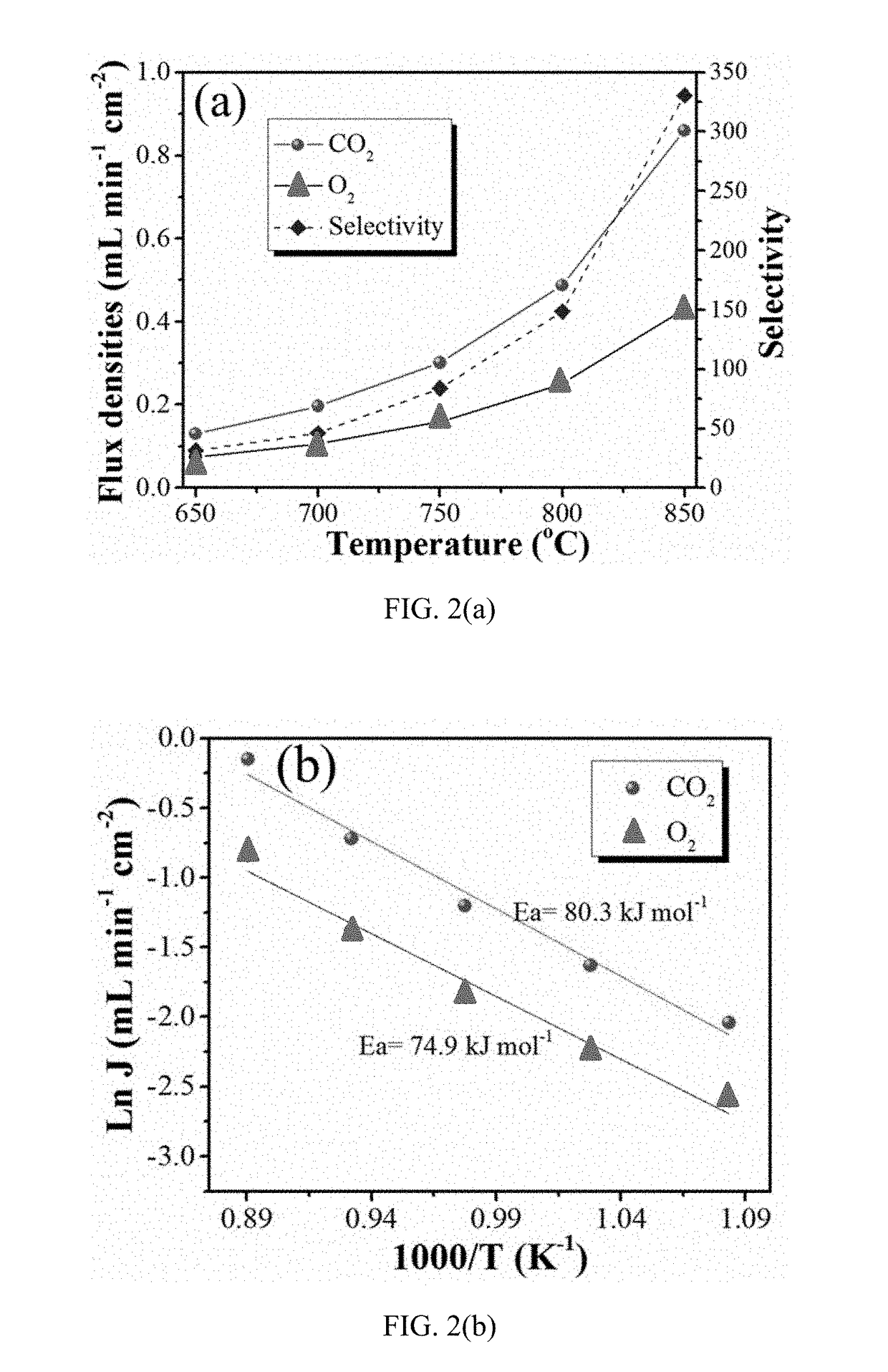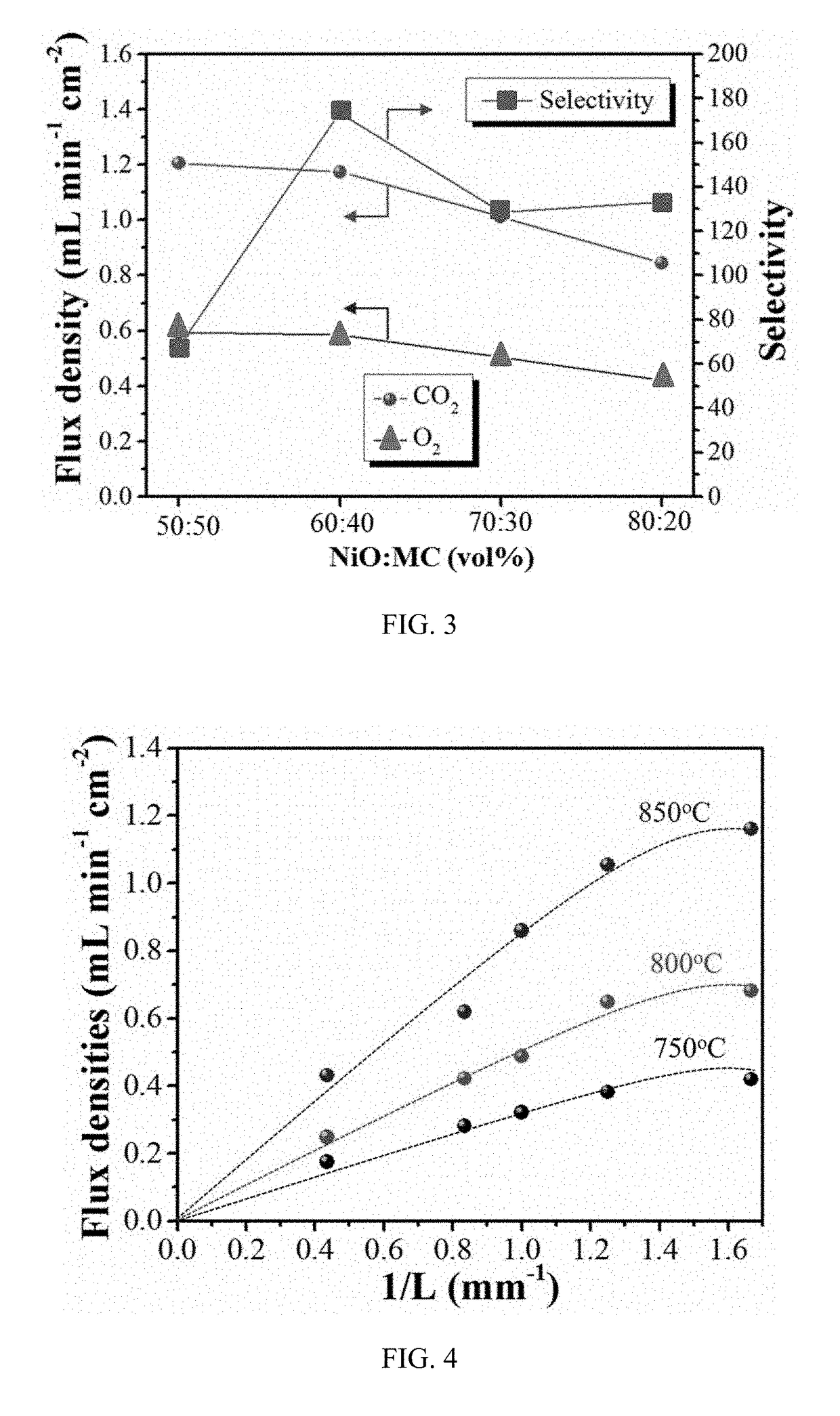Self-forming membrane for high flux and selective electrochemistry-based co2 capture
a co2 capture and electrochemistry technology, applied in the direction of membranes, dispersed particle separation, separation processes, etc., can solve the problems of membrane not maintaining a stable flux for a prolonged period, and affecting the efficiency of the process
- Summary
- Abstract
- Description
- Claims
- Application Information
AI Technical Summary
Benefits of technology
Problems solved by technology
Method used
Image
Examples
example 1
[0067]Example 1 discusses various test data compiled for the mixed electron and carbon-ion conductor (or MECC) membrane of the present invention.
Methods
[0068]The porous NiO matrix was prepared as follows. Briefly, NiO powder (99.9% metal basis, Alfa Aesar) were intimately mixed in ethanol with carbon black as a pore former at volume ratios of NiO powder to carbon black of 5:5, 6:4, 7:3 and 8:2, respectively. The dried powder mixtures were then pressed into pellets under 70 MPa pressure, followed by sintering at 1,350° C. for 12 hours in air to remove the carbon pore former and achieve good mechanical strength. The fabricated porous NiO matrix was then impregnated with a 52 mol % Li2CO3-48 mol % Na2CO3 molten carbonate (denoted as MC) at 650° C. for 2 hours to form a dense membrane. The weight increase of the pellet after MC impregnation was about 20%. After MC infiltration, the surface of the resulting NiO-MC membrane was thoroughly cleaned by sandpaper.
Flux Measur...
PUM
 Login to View More
Login to View More Abstract
Description
Claims
Application Information
 Login to View More
Login to View More - R&D
- Intellectual Property
- Life Sciences
- Materials
- Tech Scout
- Unparalleled Data Quality
- Higher Quality Content
- 60% Fewer Hallucinations
Browse by: Latest US Patents, China's latest patents, Technical Efficacy Thesaurus, Application Domain, Technology Topic, Popular Technical Reports.
© 2025 PatSnap. All rights reserved.Legal|Privacy policy|Modern Slavery Act Transparency Statement|Sitemap|About US| Contact US: help@patsnap.com



